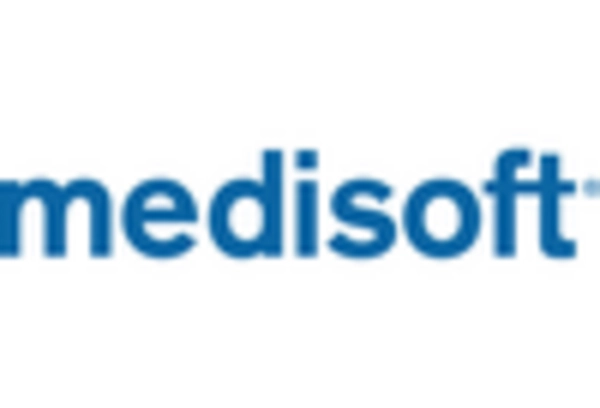Government Initiatives and Funding
Government initiatives aimed at improving healthcare access and quality in South America are significantly influencing the cardiopulmonary exercise-testing market. Various countries in the region have launched programs to enhance diagnostic capabilities, particularly in underserved areas. Increased funding for healthcare facilities is expected to facilitate the acquisition of advanced cardiopulmonary exercise-testing equipment. For instance, recent allocations of over $500 million in public health budgets are directed towards enhancing diagnostic services. This financial support is likely to stimulate the cardiopulmonary exercise-testing market, as healthcare providers invest in state-of-the-art technology to meet the growing demand for accurate and efficient testing. Consequently, the expansion of government programs is anticipated to create a favorable environment for market growth.
Integration of Advanced Data Analytics
The integration of advanced data analytics into healthcare practices is transforming the cardiopulmonary exercise-testing market. In South America, healthcare providers are increasingly utilizing data analytics to enhance the accuracy and efficiency of diagnostic tests. This trend is likely to improve patient outcomes by enabling personalized treatment plans based on test results. The cardiopulmonary exercise-testing market is expected to benefit from this technological shift, as analytics tools can provide deeper insights into patient health. With an anticipated growth in the adoption of data-driven approaches, the market could see a rise in demand for sophisticated testing equipment that incorporates these capabilities. This integration may lead to a more informed healthcare environment, fostering innovation and growth in the cardiopulmonary exercise-testing market.
Growing Awareness of Respiratory Health
The rising awareness of respiratory health issues in South America is emerging as a crucial driver for the cardiopulmonary exercise-testing market. With increasing incidences of chronic respiratory diseases, healthcare professionals are emphasizing the importance of comprehensive testing to evaluate lung function. The cardiopulmonary exercise-testing market is likely to see a surge in demand as patients seek proactive measures to manage their respiratory health. Educational campaigns and community health initiatives are contributing to this awareness, potentially leading to a 10% increase in testing rates over the next few years. As healthcare providers recognize the value of these tests in diagnosing and monitoring respiratory conditions, the cardiopulmonary exercise-testing market is expected to expand significantly.
Rising Incidence of Cardiovascular Diseases
The increasing prevalence of cardiovascular diseases in South America is a primary driver for the cardiopulmonary exercise-testing market. According to health statistics, cardiovascular diseases account for a significant portion of mortality in the region, prompting healthcare providers to seek effective diagnostic tools. The cardiopulmonary exercise-testing market is likely to benefit from this trend, as these tests are essential for assessing cardiac and pulmonary function. With an estimated growth rate of 8% annually, the demand for such testing is expected to rise, leading to enhanced investment in healthcare infrastructure and technology. This growing focus on early detection and management of cardiovascular conditions is anticipated to further propel the cardiopulmonary exercise-testing market, as healthcare systems prioritize preventive measures to improve patient outcomes.
Increased Investment in Healthcare Infrastructure
The ongoing investment in healthcare infrastructure across South America is a vital driver for the cardiopulmonary exercise-testing market. As countries in the region strive to enhance their healthcare systems, there is a concerted effort to upgrade medical facilities and equipment. This trend is likely to result in a higher demand for cardiopulmonary exercise-testing services, as modernized facilities require advanced diagnostic tools. The cardiopulmonary exercise-testing market is expected to experience growth as healthcare providers seek to meet the rising expectations of patients for quality care. With investments projected to exceed $1 billion in the next few years, the expansion of healthcare infrastructure is anticipated to create a robust environment for the cardiopulmonary exercise-testing market.


















Leave a Comment